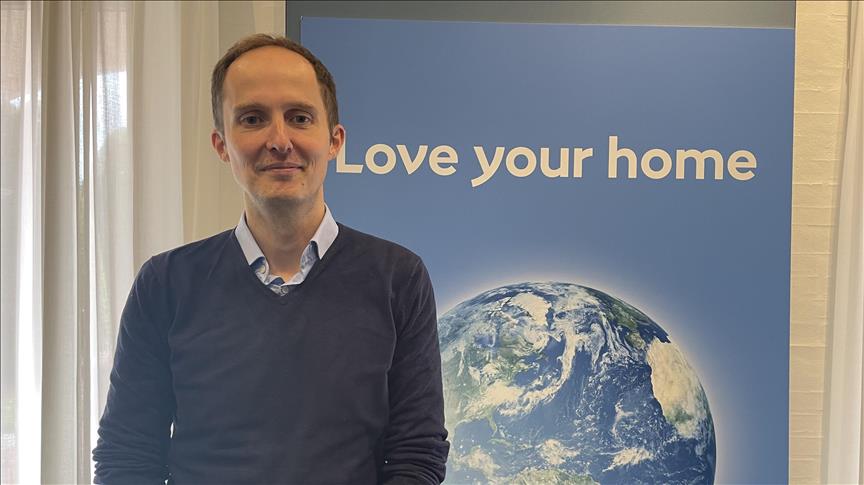The cost of offshore wind power dropped 60% in northwest Europe between 2012 and 2022, according to Jorgen Skovmose Madsen, the head of EU Regulatory Affairs at Danish Orsted, on Tuesday.
In an interview with Anadolu Agency during a study visit by Turkish entrepreneurs and officials to Denmark as part of the BEST For Energy project, Orsted said that current offshore wind is fully cost-competitive with fossil fuels.
The levelized cost of electricity per megawatt hour from offshore wind was €181 in 2012 but dropped to a range between €50 and €71 in 2022 in northwest Europe, corresponding to an almost 60% reduction.
Madsen said the company is now the world’s leading offshore wind developer both in terms of installed capacity and in its future pipeline of projects.
Madsen said they have also branched its business out to green hydrogen, an area that it is determined to grow rapidly over the coming years, focusing on the heavy industry and transport sectors.
‘We now have around 10 to 15 green hydrogen projects in early development around the world, especially in Europe but also a few in the US,’ he said.
The company has been a trailblazer in reducing CO2 emissions, having gone from being one of Europe’s most CO2-intensive energy companies in 2007 to its current position, where it has reduced CO2 emissions by nearly 90%, and where other companies have followed suit in initiating a similar emission reductions path in Europe.
With almost 9 gigawatts (GW) of offshore wind installed today, Madsen said it targets to offshore wind installed capacity of 30 GW by 2030 and a total of 50 GW of renewable energy capacity.
‘Today in total across the entire industry and across the globe, there is around 25-30 GW of offshore wind installed. We are basically aiming to have the same amount of offshore wind installed by Orsted alone in 2030,’ he said.
– Energy crisis
Madsen acknowledged the challenging situation that Europe is in with its dependency on imported fossil fuels and its overdependency on Russia.
‘We imported until recently almost half of our natural gas from Russia and also quite a lot of coal and petroleum products from Russia,” he said, adding that “it is a situation that we brought ourselves in by relying so heavily on one external supplier.’
To alleviate the energy crisis, Madsen said the company aims to add as many renewables as possible in its energy mix in the coming years and increase deployment of domestic green energy production, particularly wind turbine installments from one to four turbines per day.

